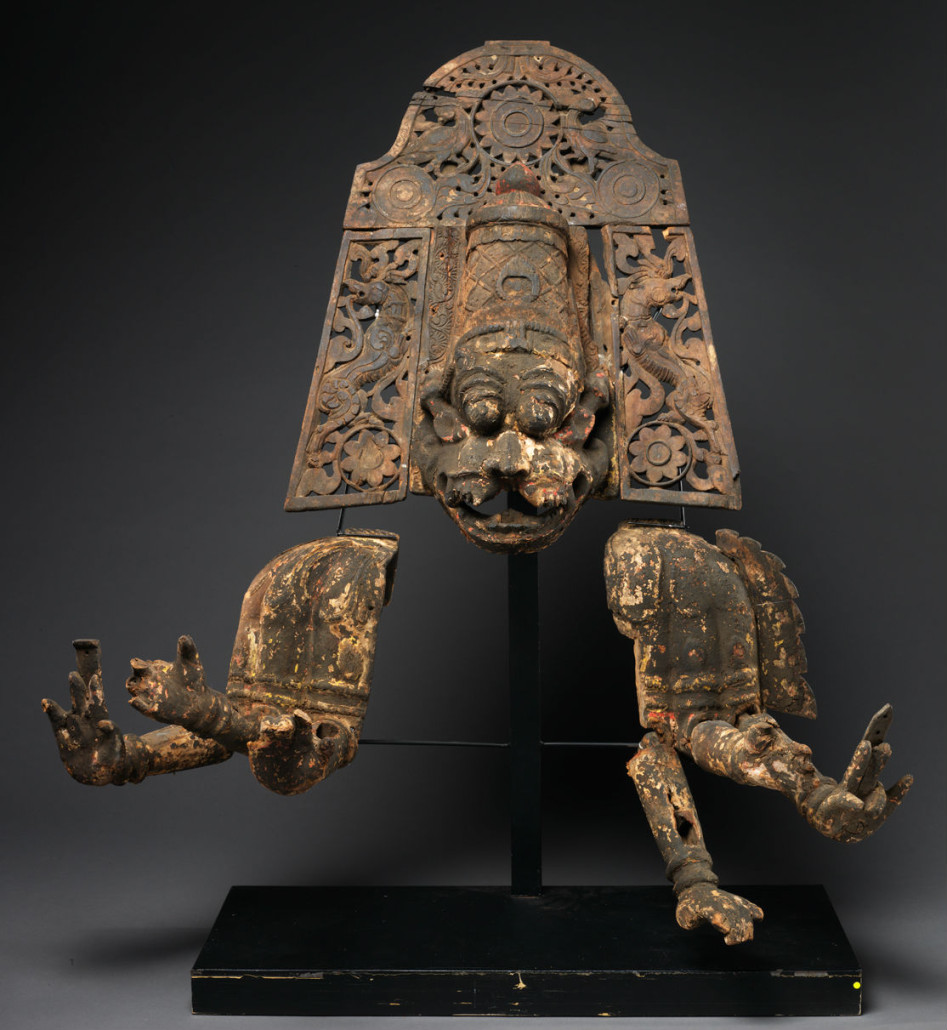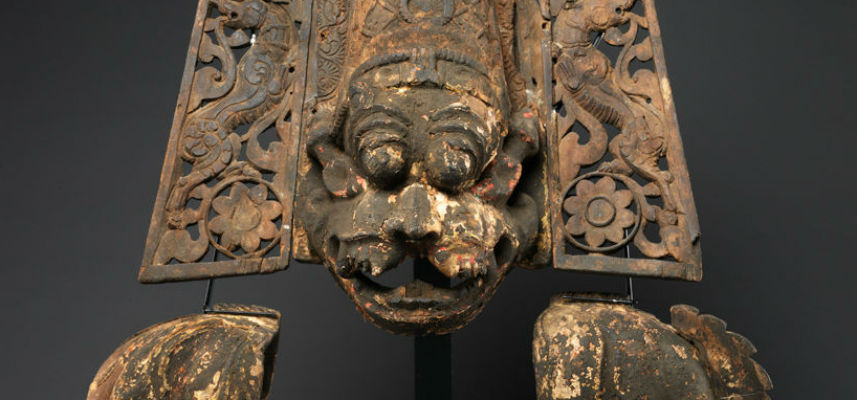
NEW YORK – Five rare wooden sculptural masks made in India – recently acquired by the Metropolitan Museum of Art – will be highlighted in the special exhibition “Encountering Vishnu: The Lion Avatar in Indian Temple Drama,” opening at the Met on Dec. 19.
Worn by actors in dramatic plays that were presented during religious festivals in southern India, the masks represent a largely unrecorded category of late medieval devotional art from India.
The appearances of Vishnu in many guises, known as avatars, are most famously celebrated in his Ten Avatars (Dasavatar). In this exhibition, Vishnu’s Narasimha (man-lion) appearance will be celebrated with several dramatic sculptural depictions. They all explore the theme of Vishnu in his man-lion form, revealing himself at the court of an evil king in response to the king’s attempts to slay his own son for his unwavering devotion (bhakti) to Vishnu. A frightful battle ensues in which Narasimha finally overcomes the protective magic with which the evil King Hiranyanatakam surrounds himself, and Narasimha disembowels the king. Order is thus restored to the universe.
This narrative is dramatically represented in sculptures and painting, and when staged it is given heightened drama by the wearing of these powerfully expressive masks. This temple drama, known as Hiranyanatakam, is still performed in the Kaveri delta region of Tamil Nadu, in villages around Thanjavur in southern India.
Along with the masks, the exhibition will present works in bronze, sandstone and wood, as well as miniature paintings, lithographic devotional prints and early photography, all of which illuminate the theme of Vishnu’s divine appearances. Dating from the sixth to the 20th century, the 30 works will be drawn from the Met’s collection, as well as private collections, and will include an extraordinary seated sandstone Narasimha from the sixth or seventh century. Education programs include a Friday Focus lecture on April 1 and exhibition tours.
The exhibition will be organized by John S. Guy, Florence and Herbert Irving Curator of the Arts of South and Southeast Asia.
The exhibition is made possible by the Miriam and Ira D. Wallach Foundation Fund.



